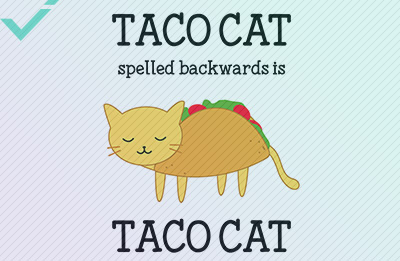Transcreation can be a powerful tool in the right hands. It is the process of localizing content beyond words. A well-constructed text is an important part of transcreation, but it is only one part of a much larger Jigsaw. Transcreation aims to improve localization of content by also taking into account things such as imagery, color, and other significant cultural aspects – focusing on a combined user experience rather than one particular part of a content strategy. Transcreation makes each campaign relevant to a unique target audience while retaining the theme or ideas originally intended. The simplest way to think of transcreation is this; it is not what you say, but how you say it. Through the process of transcreation, a message can be effectively tailored to a different target audience. This can include different cultures, but even different demographics within the same source language.
WHAT IS TRANSCREATION?
A term typically used by advertising or marketing professionals, transcreation is the process of adapting a message for an audience while maintaining its intent, style, tone, and context. This can be within a language, or from one language to another. Transcreation is often far more prevalent than we realize. If it is done well, the target audience will never notice that the text wasn’t originally intended for them.
A very simple example of transcreation can be observed through the use of color. White is often used in Western advertising and is typically associated with purity and cleanliness. White space allows text to stand out and for a strong message to take center stage. However, using the color white to promote the same ideals in somewhere like China would not deliver the same positive response. In China, white is often associated with mourning and loss – a different mood than the Western interpretation entirely. Red is a color associated with happiness in China and as such, simply changing the color scheme will maintain the positive message of the source text without isolating the target audience. The original design has changed, but the desired outcome is the same. While writing and translation is a vital foundation of transcreation, it demonstrates how a business owner can take things one step further and utilize their content to the fullest.
A GREAT EXAMPLE OF TRANSCREATION
When it comes to transcreation, there are often more examples than we immediately recognize. In the summers of 2013 and 2014, you may remember the launch of Coca-Cola’s hugely popular “share a coke” campaign. Originating in Australia, the premise was simple; the famous catchphrase would be replaced with 150 of Australia’s most popular names. This idea may seem incredibly simple, but herein lies the beauty of transcreation; it doesn’t need to involve an over the top change or brand-altering image. Instead, the message is delivered subtly, resonating with the values or ideals of the target audience.
With such a simple proposition, Coca-Cola soon started to roll out the campaign across the globe. However, the top 150 names in Australia are going to make little-to-no sense in the UK or even America. Despite the language being the same, the culture in each country differs and as such, popular names will be different.
To take this campaign one step further, Coca-Cola took advantage of relevant cultural events in the countries it services by releasing pop culture-influenced designs. For instance, in the UK they released a number of bottles printed with the names “Will” and “Kate” after the birth of the first royal baby. This was an event that the majority of the nation showed an interest in. By capitalizing on this hype, Coca-Cola not only showed an understanding of their audience, but delivered a strong message that their product was meant for the UK market and UK consumers. As prospective buyers, when we feel that a product seems designed for our interests and values, we are far more likely to buy this product.

THE ADVANTAGES OF TRANSCREATION
- Transcreation results in a new message, not a new idea
- Increases brand awareness
- Targets new audiences
- Can be tailored to small or large-scale advertising campaigns
- Effective transcreation can start with just a few altered words
SMALL IDEA, BIG BUSINESS
The Coca-Cola campaign shows the beauty of simple, yet effective transcreation. A small change, in this case a few words, boosted brand loyalty in countries all over the globe. While we can be confident that Coca-Cola is and will remain one of the biggest brands in the world, what can effective transcreation do for smaller businesses?
The reality is, transcreation can be used to the exact same effect. If you think on a smaller scale, something as simple as using specific names in an advertising campaign will produce different results all the way down to a regional level. A name popular in the South of England won’t be as popular in the North, whilst the same can be said statewide for the USA. Popular names in Tennessee will be different from those in Oregon.
If you are a small business currently running an ad campaign, transcreation could make the difference with that essential year over year growth. Using an idea you already have, simply tailor it to a specific audience. This is why having a professional transcreation team can totally revolutionize the way you do business.
You already have the idea. There is no need to spend excessive time or money coming up with something novel, it’s just about making it relevant to a new market. That being said, the characteristics of each new market you target will inevitably change. Remember, transcreation can sometimes require significant changes in colors, images, or even whole blocks of text.

GETTING TRANSCREATION WRONG
The benefits of transcreation can be vast. Who wouldn’t want to take a small, localized message about their business and expand it across multiple regions and demographics? There is, however, a flip side to all this positivity. Poor transcreation can have a longer lasting impact than poor translation. Ensuring you have a professional transcreation team that not only understands your message, but the cultural references or ideals of the audience you are targeting, is essential. It only takes one poor experience for a customer or client to never return.
In 2011, Puma found out the hard way what happens when you do not truly understand your target audience. Looking to make their brand relevant, they sought to honor the United Arab Emirates 40th National Day by creating a limited run of trainers in the colors of the UAE flag. In areas of the world like the USA and UK, people often wear trainers as a means of expression and allegiance. It’s common to show one’s support for a specific cause or team by wearing clothes or shoes following that theme. In the Emirates though, they felt the shoe’s pattern trivialized their national flag. Not only that, but in Arab culture, shoes are seen as dirty due to their contact with the floor and feet. The line was promptly removed but, as you can imagine, Puma’s brand loyalty in that area would have been severely damaged.
So as you can see, getting transcreation right is incredibly important if you are going to do it. However, if you do it and succeed, you can take expertly crafted content and push its returns even further. All it takes is a little smart application and creativity!
While we don’t offer a transcreation service, if you need expertly written and translated content to start you off, be sure to get in contact with us!


